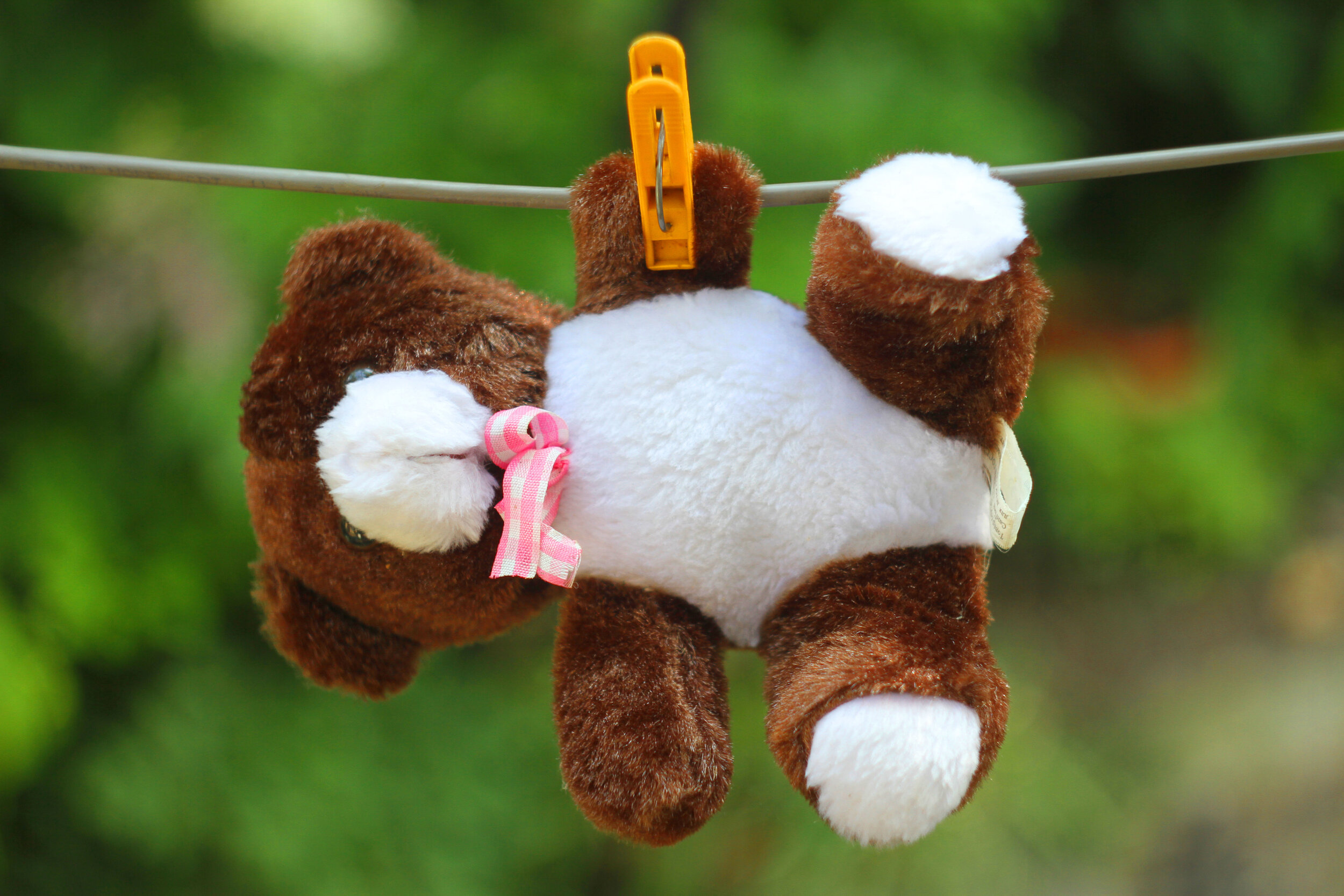How to Become a Natural-Born Storyteller!
One day, toddler Thomas came to his mother. He was holding a dripping-wet Teddy Bear in one hand. He had a broad smile on his face.
His mother said, “Thomas, what happened to Teddy? Goodness!”
Thomas replied with a broad grin and one word: “Plop!”
In response to a series of questions, his mother got the whole story:
Thomas had accidentally dropped his Teddy Bear into the dog’s full drinking-water bowl;
Thomas had delighted in the resulting sound (Plop!)!
Was This a Story?
Thomas’s mother, professor of developmental psychology Monisha Pasupathi, informally describes this episode as “Thomas’s first story.”
Does she really take one word, “Plop,” to be a full story?
No! “Plop” was clearly just the punchline. But it was Thomas’s first punchline—and every story-learner has to start somewhere!
Importantly, it took several questions from his mother to uncover Thomas’s experience of the “plop” sound. That is, what seemed incomprehensible at first became comprehensible because Thomas had a sympathetic, curious listener: in this case, his mother.
Learning to Tell Stories—the Natural Way
Over time, like so many children, Thomas told (and then answered questions from adults about) enough minimalist stories (like “Plop”) to know what to include in a story—in order to get his listeners to respond right away with a delight similar to his own.
Little by little, over a few years, he expanded his storytelling skills to include things like:
The facts necessary for the listener to understand the story as a whole;
The feelings and motivations Thomas experienced in the course of the story;
Organization of all that information, in a way that people can make sense from it.
Beyond those skills, Thomas eventually learned to gauge whether his listeners were paying attention—and how to shift his stories to increase that attention. In time, he could also balance his description of the actions of a story with indicating the story’s meanings and larger point.
The Invisible Process
Notice that, even though his mother is a professor attuned to learning processes, Thomas didn’t learn to tell stories by taking “lessons.” Rather, he learned by trying to share his experiences with people he cared about.
When his sharing didn’t quite work, adults and older children around him asked helpful questions and then listened to Thomas's answers.
Eventually, Thomas learned (unconsciously) to include the answers to those questions when he told a story the first time.
What If Thomas Hadn’t Been Helped to Tell Better?
Thomas went on to become a competent storyteller, able to share his experience with others whenever he wanted to.
But what if he hadn’t had helping adults to guide him, to ask him questions and then perhaps encourage him to tell parts of the story more clearly?
Likely, Thomas would not have learned to tell stories so well. People around him might have judged Thomas to be lacking the “talent” to tell stories.
The crux of the “storytelling talent” fallacy
A child's parents (unless they are professors interested in understanding learning) are usually unaware that they are teaching the child to tell stories. As a result, we tend to assume that children like Thomas are “gifted.” Why? Because they appear to have learned without being taught.
In the same way, children like Thomas won’t necessarily remember, later in life, having been helped to tell in these subtle and gradual ways.
In short, Thomas won’t remember being taught to tell stories, any more than he will remember having learned to speak his native tongue.
The Natural Way to Learn Stories
We see from Thomas’s experience (and the incisive analysis I have paraphrased from his mother, Dr. Pasupathi) that children definitely learn to tell stories—and that the most successful methods of learning tend to be invisible to all involved!
The Unnatural Ways—and Why They So Often Fail
This invisibility of the natural story-learning processes, sadly, leaves us open to our culture’s tendency to attribute abilities—especially artistic abilities—to special inborn talent (perhaps even enabled by special genes).
Further, our lack of awareness of the natural processes for learning to tell stories also makes us vulnerable to mechanistic approaches, like assembling a story by starting with parts (e.g. a hero, a quest, an obstacle, etc.) I’m not saying that those mechanistic approaches have no value. I’m saying that, if they are used, they should later supplement the natural story-learning method—not replace it.
Why not rely on rules and parts to add to a story? Because stories are too complex and holistic be fully “figure-out-able." Coordinating all the parts of a fully-developed story is actually easier when relying primarily on unconscious, natural processes!
*Professor Pasupathi, professor of psychology at the University of Utah, tells the Plop story and lays out some of the natural story-learning processes in Lesson 11 of her excellent Great Courses lecture series, How We Learn. https://www.thegreatcourses.com/courses/how-we-learn.html

